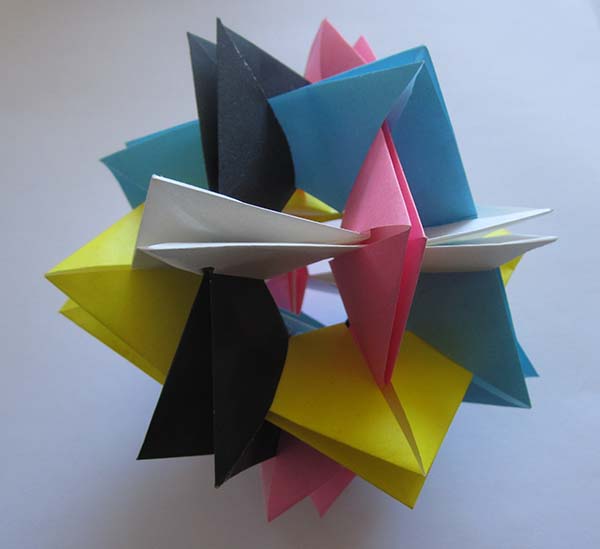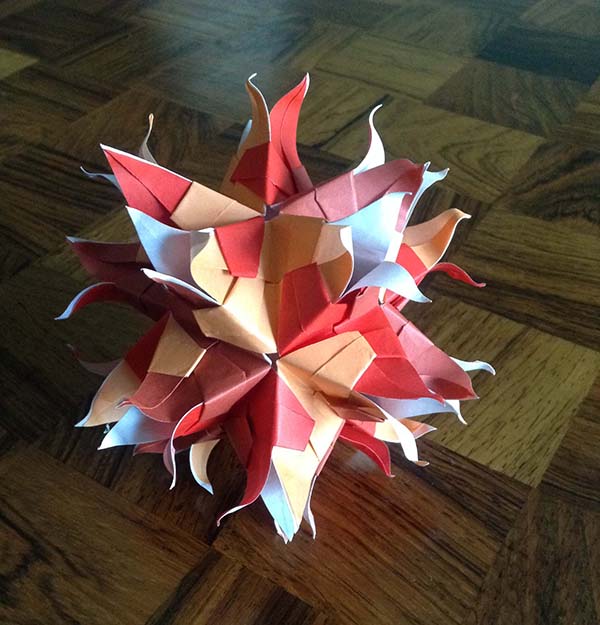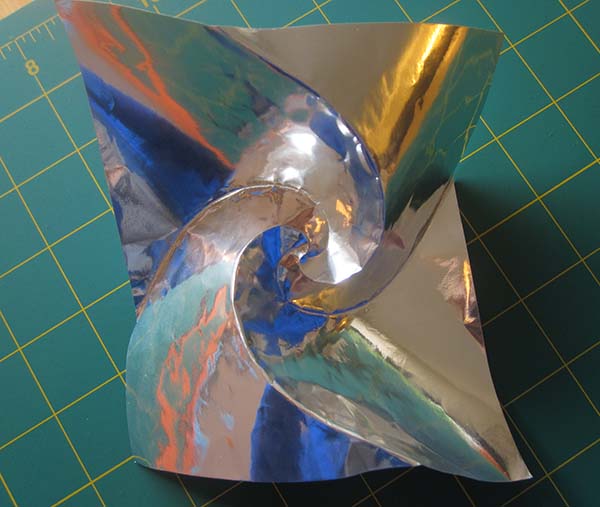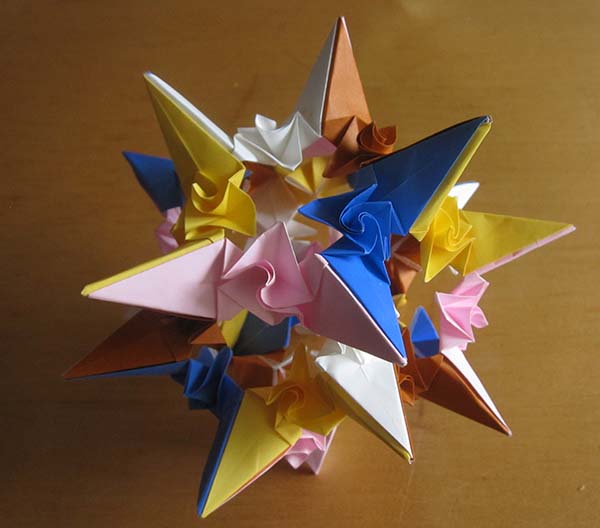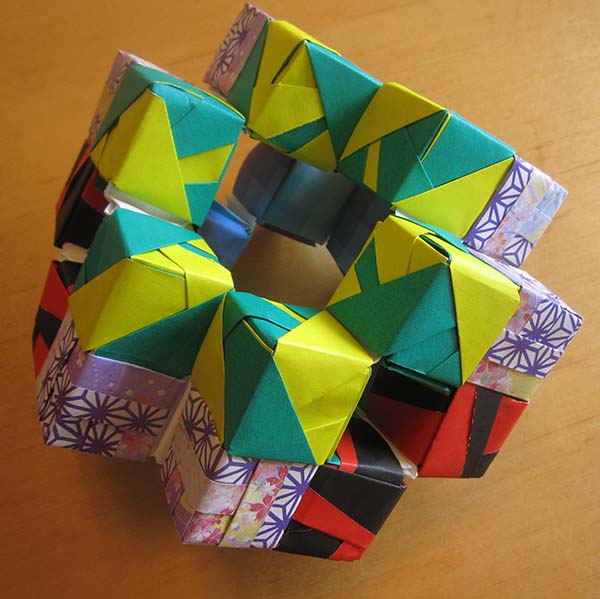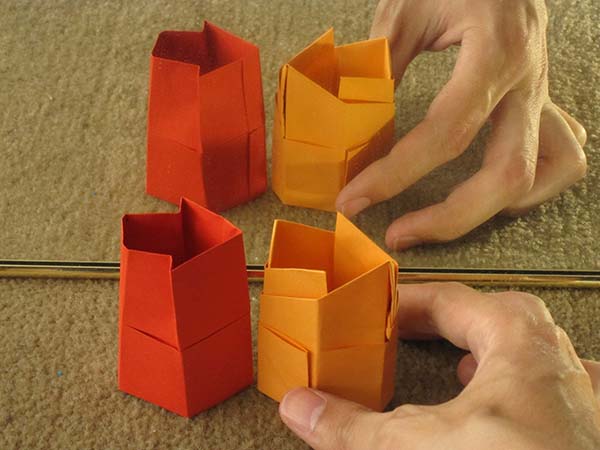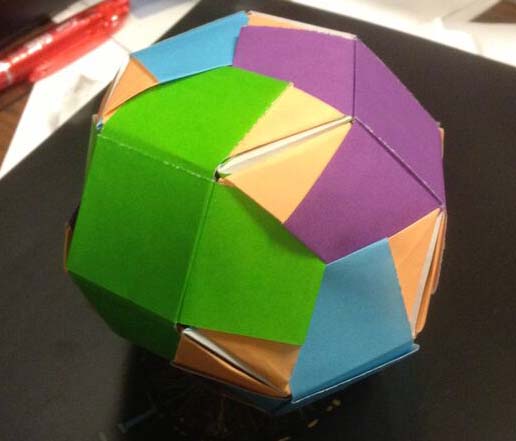
Truncated Octahedron, designed by me. I kept this on my office desk.
Today’s model is one of my earliest original designs. This is a truncated octahedron, which is the shape you get when you take an octahedron, and chop off the 6 tips.
I was interested in designing a model with this particular shape, because it has some special significance in condensed matter physics. There’s a certain kind of crystal structure, called the “body-centered cubic structure”, which looks like this:

